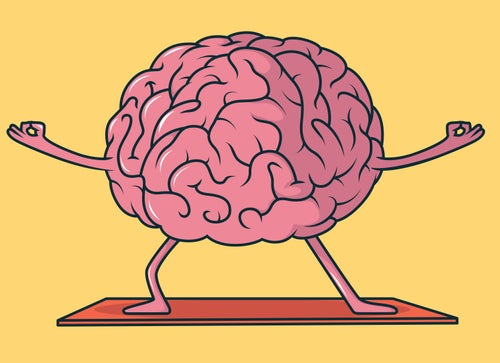

Mentally, the past year has really done a number on us. Many of the things we used to enjoy to help us feel good about ourselves were taken away when we went into lockdown and started to live our lives full of restrictions.
Psychotherapist and mental health consultant Zoë Aston doesn’t think there’s been enough talk about the effect all of this has had on our self-esteem. “We talked about loss, uncertainty and feeling out of control, but a lot of what happened for people psychologically can be brought back to the fact our self-esteem were challenged without warning, all of a sudden last March,” she says.
If you think back to when the shops and gyms closed their doors, and we could no longer see friends, many of us had nowhere to turn but inward. During this time, probably quite unconsciously, we were facing things about ourselves and sitting with feelings we’d never had to bother paying attention to before.
“As people go back to what they were doing, getting our self-esteem back in shape is exactly where we need to be,” says Aston.
If we have low self-esteem – and let it continue – it can lead to depression, anxiety and turning to unhelpful coping mechanisms. But there are little actions you can take to start building yourself back up once more.
In her book, Your Mental Health Workout, Aston has created a plan for building resilience with simple workouts for your mind. “Our mental health is just like our physical health,” says the author, “we all have psychological weak spots or injuries and, just like physical injury, when they get used they may feel tender or uncomfortable. They need to be cared for in the right way so they can heal.”
While the book is jam-packed with workouts for the mind you can try at home, there’s one that particularly resonates after a year of being stuck indoors. Aston walks us through the warm-up exercise for improving self-esteem (or as she calls it, our core stability) because “nothing is more important than how you feel and what you think about yourself”. Let’s give it a go.
Step 1: Introduce stabilising movements
Firstly, Aston says you need to introduce “stabilising movements” into your day. These are actions of you looking after yourself.
When we feed ourselves a healthy balanced diet, have an early night because we’re tired, pay a bill – we’re doing something responsible. “All these little things we do on a day-to-day basis that we don’t really give ourselves credit for, are responsible things we’re doing to look after ourselves,” says Aston, “and what we miss is that they actually give us the message that we care enough about ourselves to do these things. If we didn’t care, we wouldn’t do them.”
Taking responsibility is important, says Aston. When we don’t take responsibility for ourselves, we reinforce disempowering and negative feelings and thoughts about ourselves.
So, ask yourself: what can I do today that allows me to be responsible and accepting towards myself and gives me the message that I am good enough? Take some time to think about what you could do – and action it today.
Step 2: Create stabilising thoughts
Through creating stabilising thoughts, you offer yourself the message that you are worthy. Stabilising thoughts come in two forms: thoughts that anchor and soothe you, and thoughts that give you positive and motivating messages.
Take some time to:
Write down three thoughts that soothe you,
And three thoughts that are positive and motivating to you.
Excuse anything that comes up that doesn’t feel stabilising; just let it pass, says Aston. Thoughts and behaviour tend to organically improve the more you do this exercise.
“These two exercises work in tandem,” she says. “Sometimes we have to create stabilising thoughts so that, in turn, we are able to feel good enough to show up for ourselves in a healthier way; and sometimes we have to introduce stabilising movements first, so we find we start to believe good enough things about ourselves and the stabilising thoughts create themselves along the way.”
Step 3: And repeat
The third step in the workout is simply repetition. Do this warm-up exercise as often as possible and in as many different areas of your life as you can to keep that core stability in good shape.
Your Mental Health Workout by Zoë Aston is published by Yellow Kite on May 13.